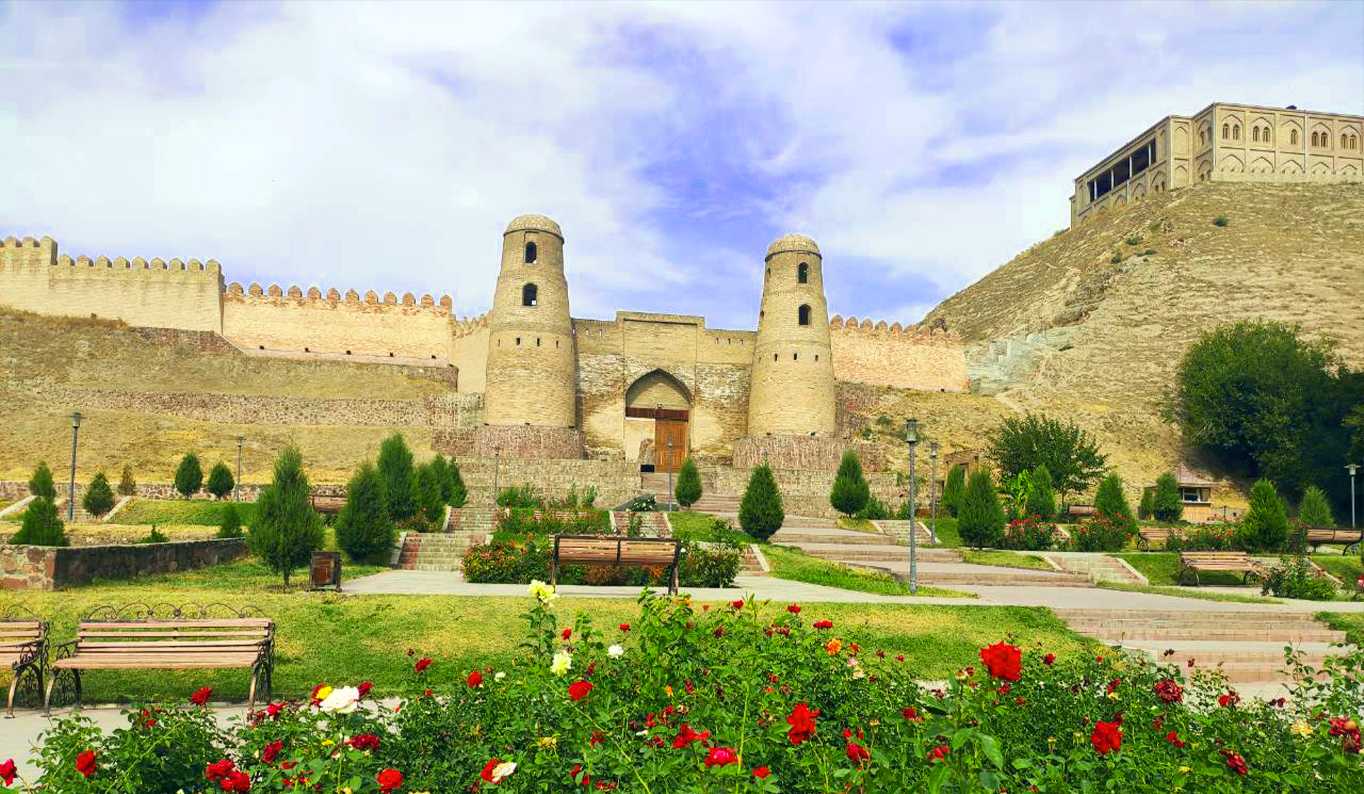Gissar – a modern town on a Silk Road
After leaving Dushanbe behind you,
The Great Gissar will come closer to you,
And you will explore the sparkling carvings of the mountains,
And the rivers will charm you with fascinating songs,
Streaming down from the steep cliffs towards you…
Mirzo Tursunzoda
The modern town of Gissar is located 18 km to the western part of Dishanbe in the center of the Gissar valley. This town is unique with its cleanness, cozy atmosphere, friendly people and the glow of Eastern antiquity. No, you are not met by clay made walls and houses, all is modern and with the asphalted roads, state and private houses, central market, depot, a range of trade centers and even with its small department store. The town is covered by the light of colorful lamps at night, creating a charming atmosphere with wind blowing coolness during a hot summer day.
However when we close our eyes or all of a sudden as if in the story of “One thousand and one night” - Gissar changes its appearance. The caravans of camels floating as spaceships loaded with goods, thousands of voices are heard from the chaikhanas and caranserais, and here those tired travellers and merchants drink life-giving green tea. The merchants unfold the package of exquisite silk in order to admire the beauty of the cloth and the steel knives and yataghans glister.
In the medieval ages the cities of Shuman and Aharun were located at the caravan road along the southern foothills of the Gissar ranges in Vashgird and Rasht, and in the territory of the modern city and its suburbs to the East of Saganiyan (present Uzbek Dehnau). The modern territory consists of Gissar and Tursunzade Regions of Tajikistan and the rivers of Karatag and Shirkent valleys and Gissar valley with Khanaka River streaming towards the western part of Gissar. The hundred years of the cultural heritage is hidden under earth. It is normal if a piece of chipped ceramics or something from the household appears under the feet of a curious traveller. The archaeological excavations and investigations of this settlement are held by the Tajik archaeological expedition for 30 years.
According to the given evidences before the Islamic period Shuman and the neighboring Aharun had been under the power of the same king and possessions lived in the fortress of Shuman, and was more powerful than the ruler of Chaganian.
According to the Chinese sources the territory of Shuman extended from the west to the south for 4 days of travelling and from the south to the north for 1 day of travelling, and at that time the ruler was Turkish from the descendant of “Khi-Su” dynasty, and the city of Shuman (Suman at that time) had the status of the capital in the first middle of the VII century with two monasteries of the Khi-Su (Ki-Su) kingdom.
After the administrative reform made by the Chinese authorities in the land of Western Turkish kaganat in 658-659, a governorship of Tiyen-ma was founded in the place of that kingdom and besides Suman it consisted of Khulu-lu-en and Aharun either.
The Arabs brought Islam and the Eastern culture which was improved and blossomed by the Turkish and Mongolian dynasties of the XI and early XIX century, and Bukharian Amirat in XIX and early XX century.
The name of Gissar town we can see in the written sources of the early XV century included in the Gissar Bek, and was named Hissari Shodmon – “The fortress of Shadman” (The fortress of Shuman)
In the process of excavations was ascertained that life existed here even before the XV century, and the cultural layers of the V-VI and X-XI centuries which were explored 68 km from the Mahmudi Azam mausoleum is the best evidence of this investigation. The layers of the X-XII centuries explored 7 m from the North and Eastern corner of Sangin Mosque. According to the local sources this mosque was built during the time of “Umar” caliph in the VII century. The Gissar fortress itself was built by the mythical king Afrasiyab (I centuries BC). By the way the ancient city of Khoki Safed and its Necropolis Tupkhona (I century BC) were located in the eastern part of the late mediaeval Gissar fortress.
In its modern history Gissar was honored the status of the city twice, first in 1993 when from the urban-type settlement it became a city of regional significance and it remained that way until 2005. From 2015 until these days the third time when this status was returned to it.
Nowadays Gissar is also a transport junction – a railway from the Khanaka station passes right through the city and to the north of the settlement there is an interstate highway Dushanbe-Termez, connecting Uzbekistan and Tajikistan. It was built in 1940-1942 with the purpose of improving hydrological, soil, agroclimatic and other conditions.
However the real fame of Gissar, in addition to its attractions, was brought by sheep breeding – here they raise the Gissar ram, which is the largest among all cultivated breeds of sheep and reaches 80-85 cm at the withers.
The small town of Gissar still keeps a lot of secrets, which only an interesting and thoughtful interlocutor will agree to open. And he will speak through the lips of the old residents of the area, who know a lot but are silent because they are waiting for their listener.


Leave a comment